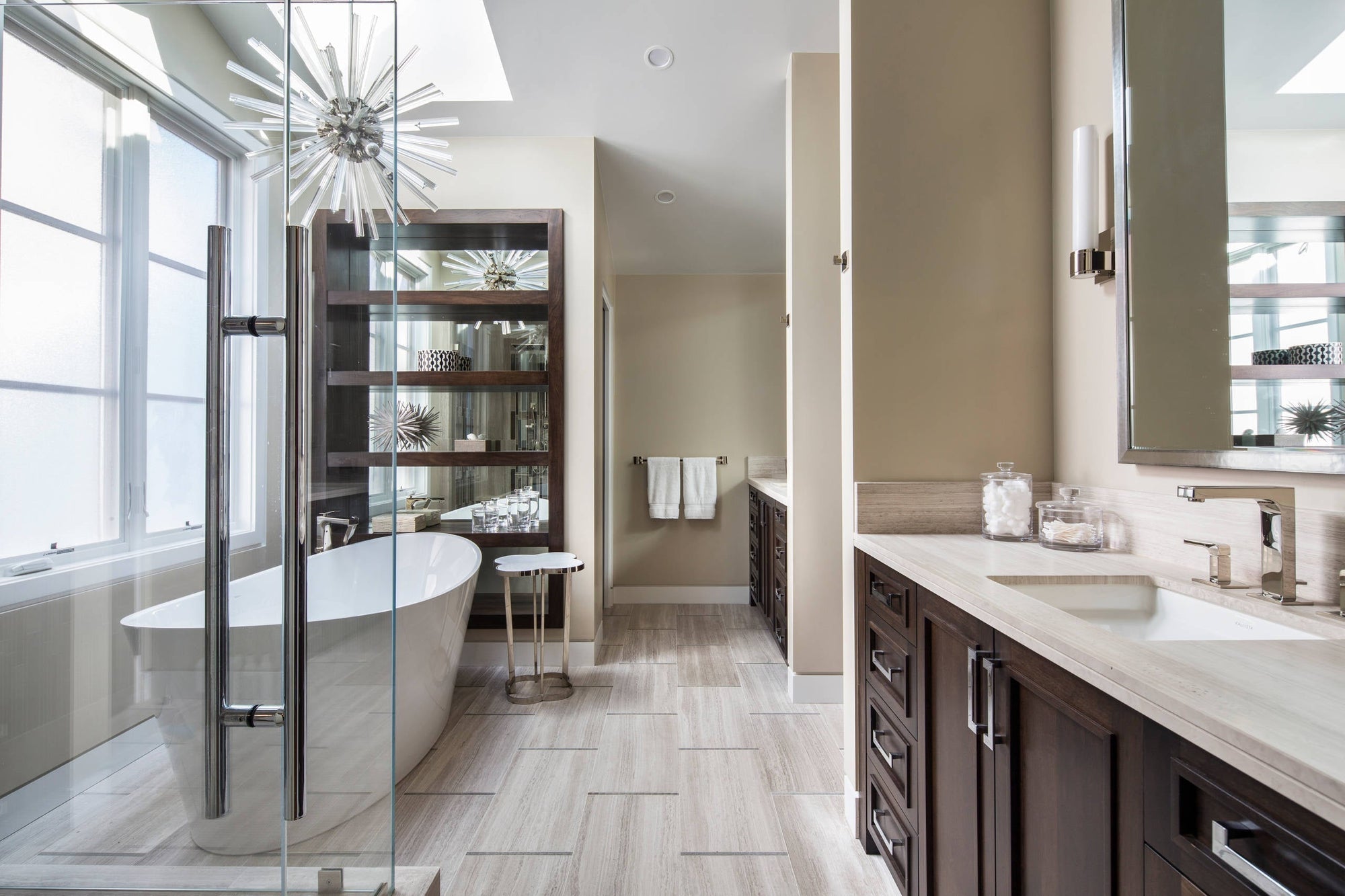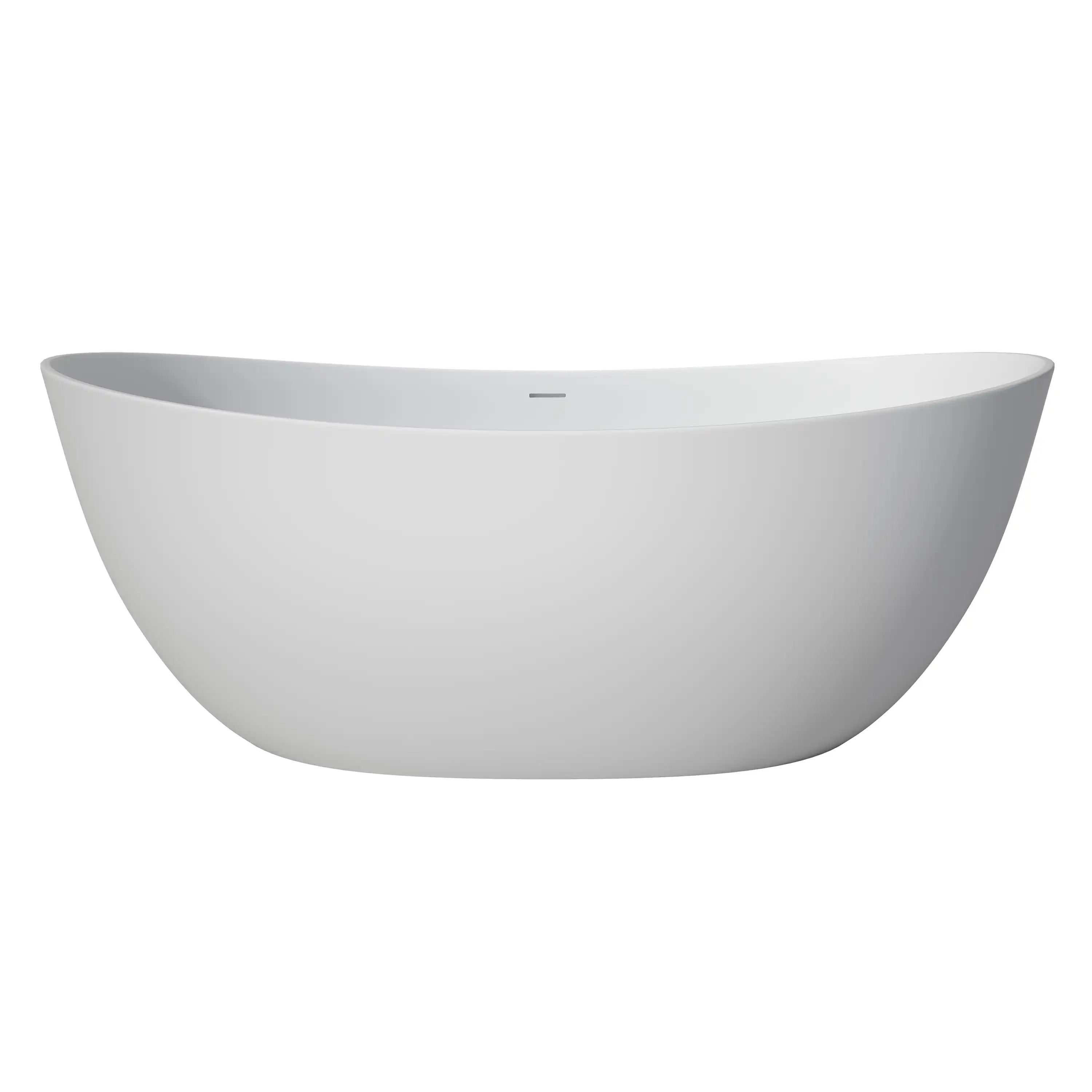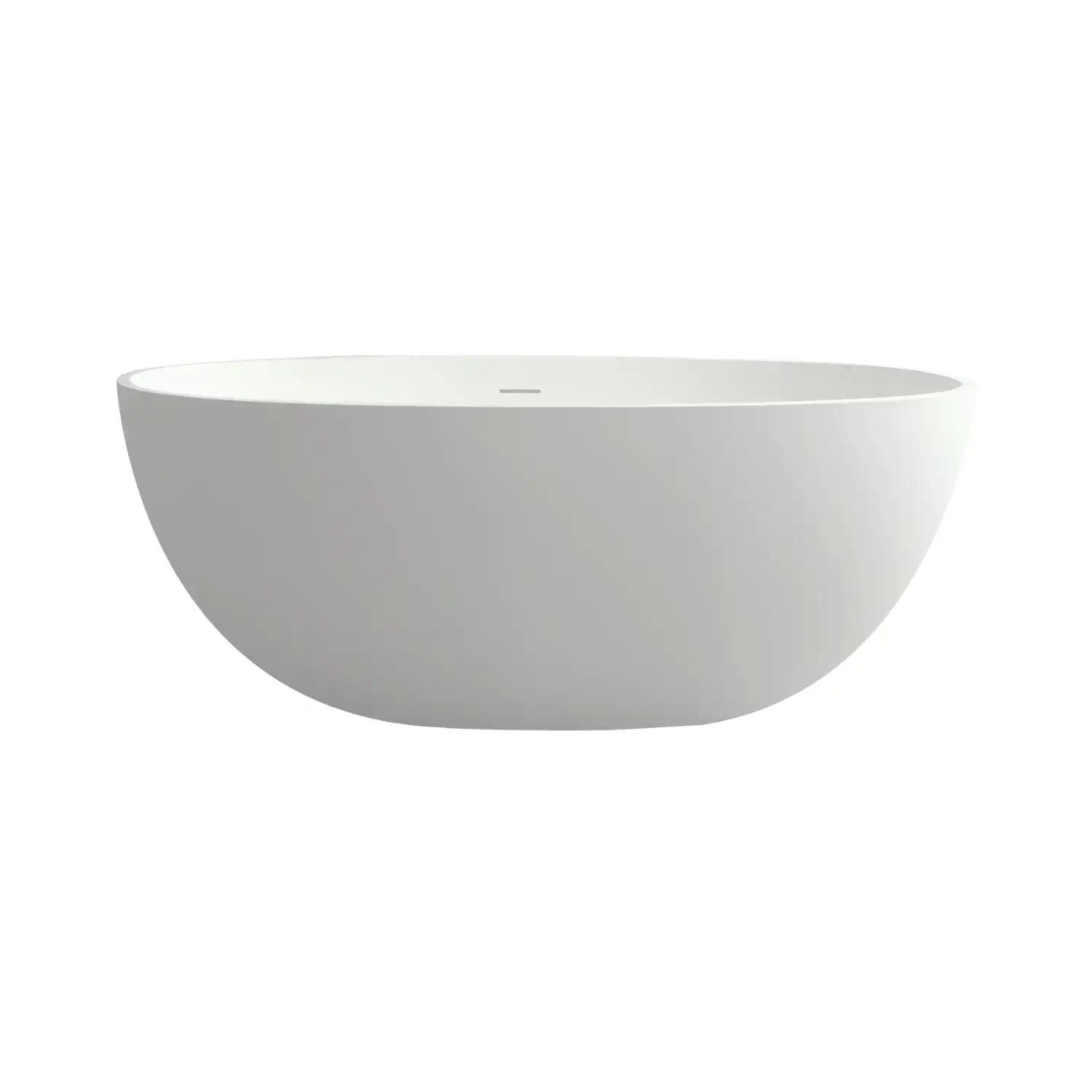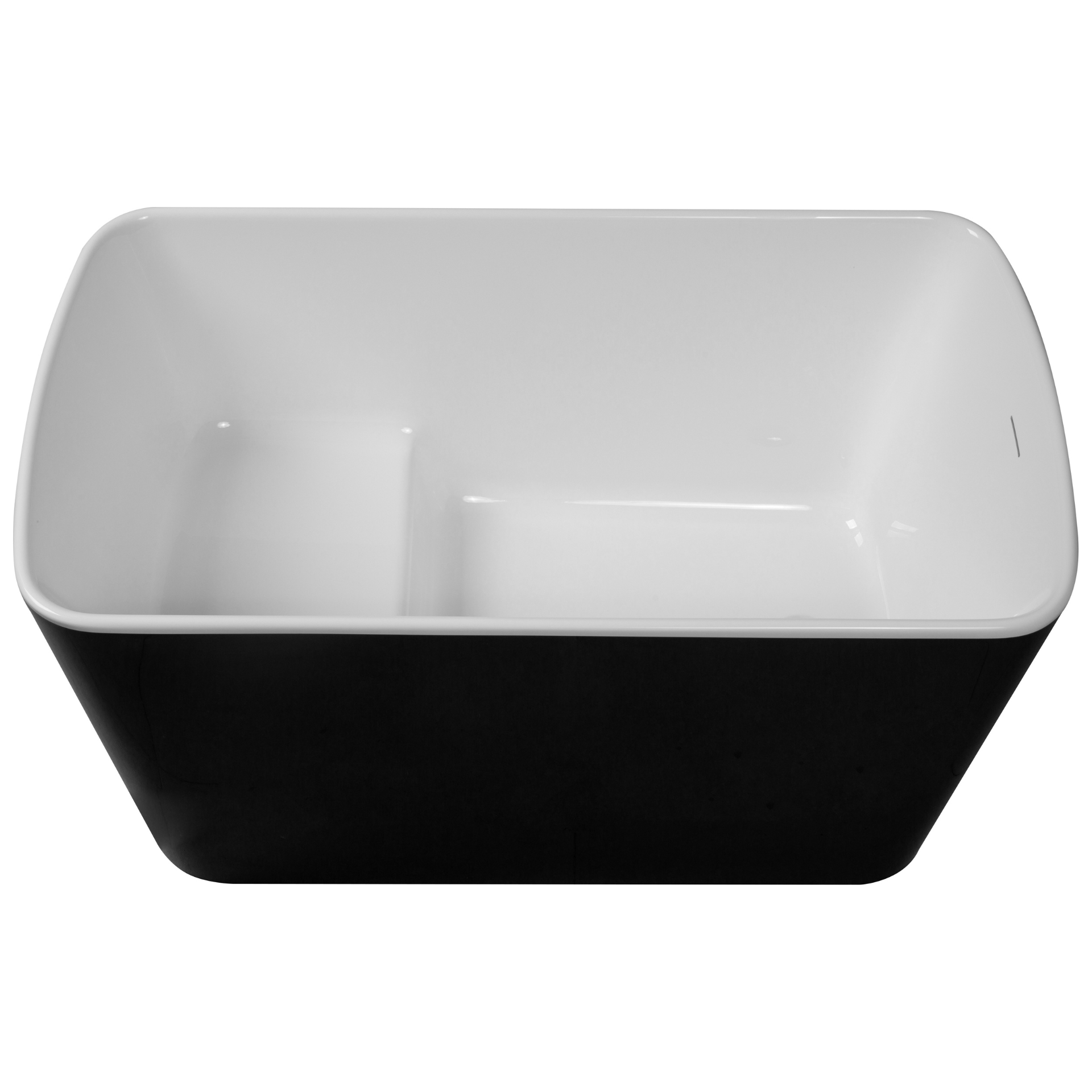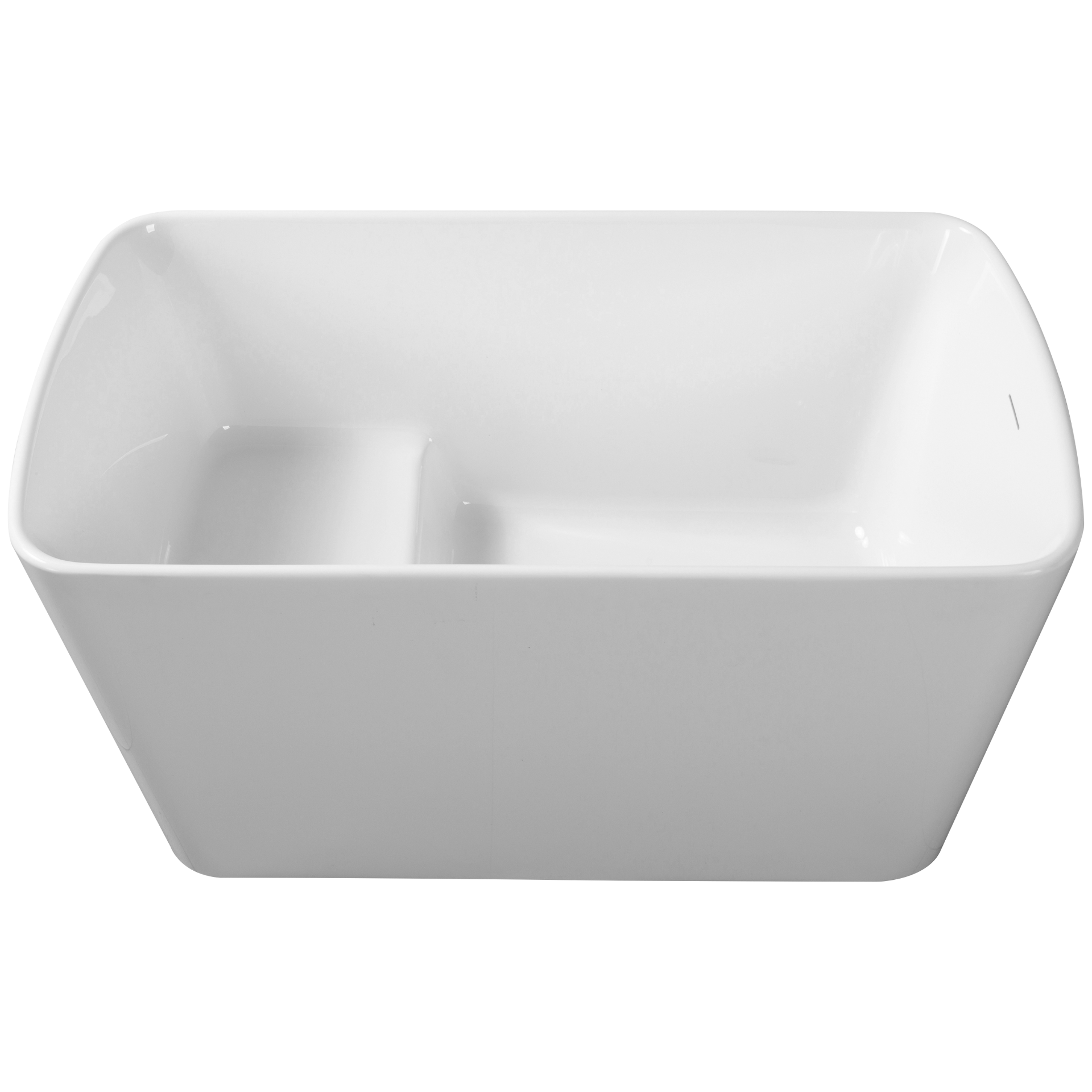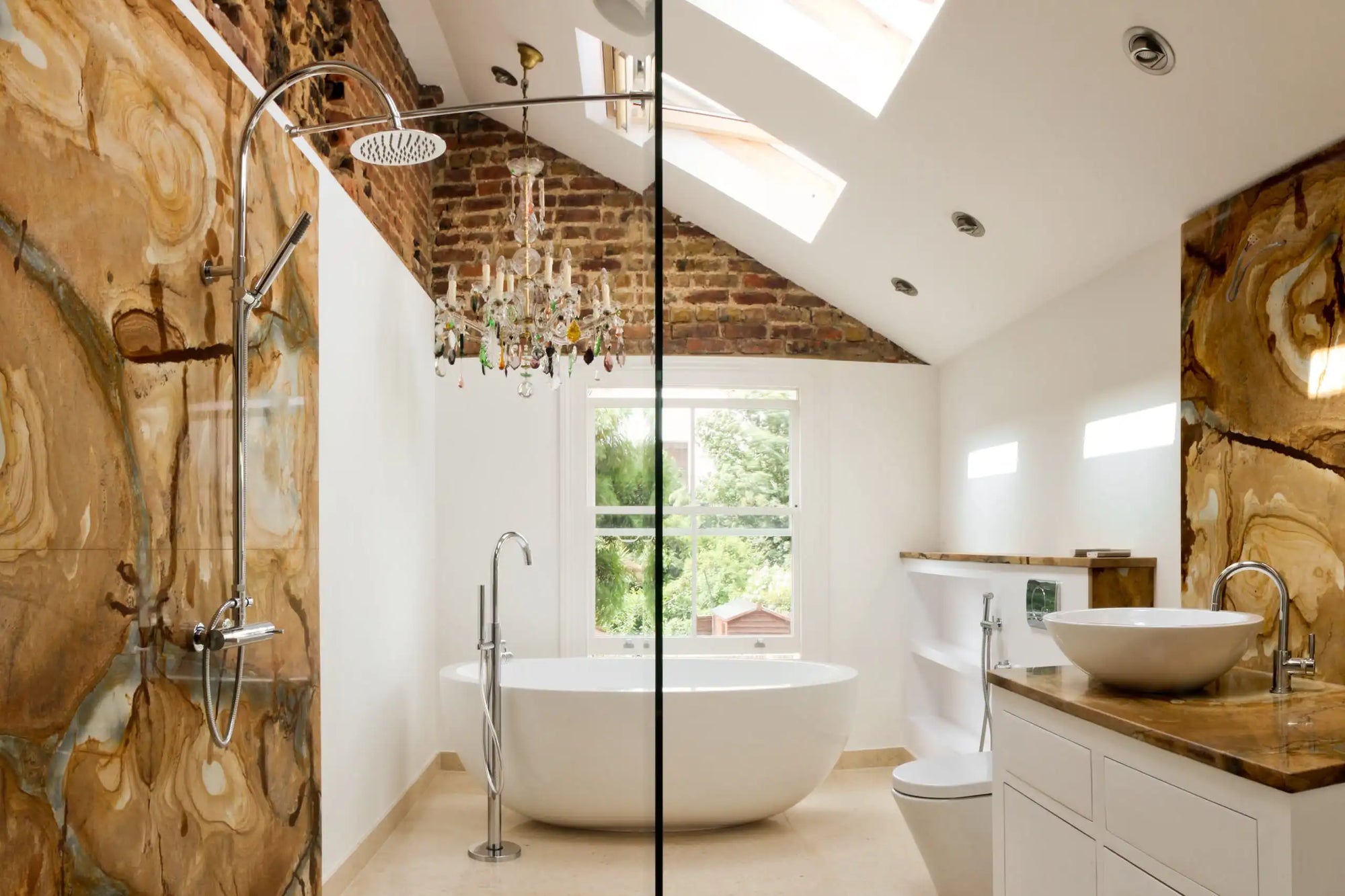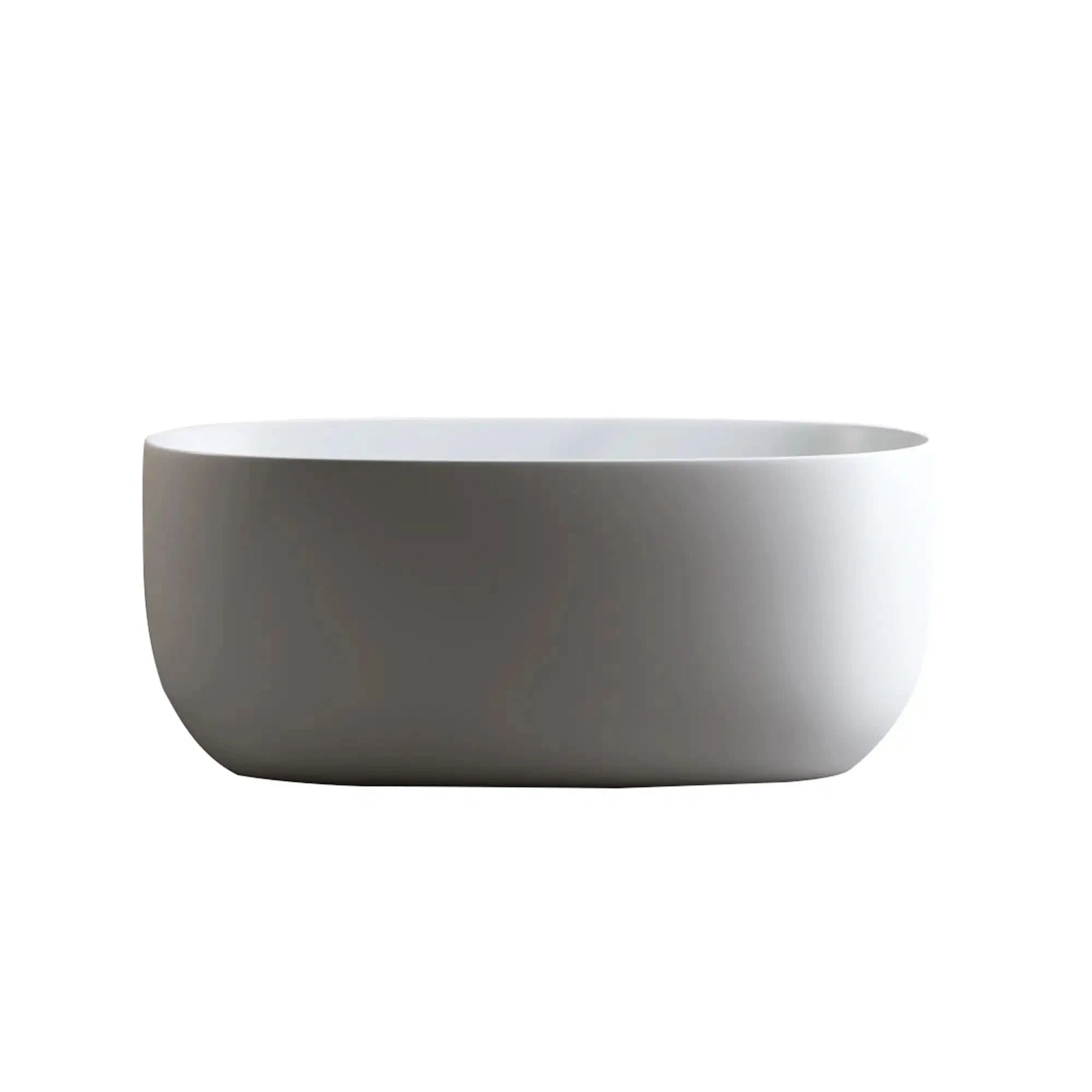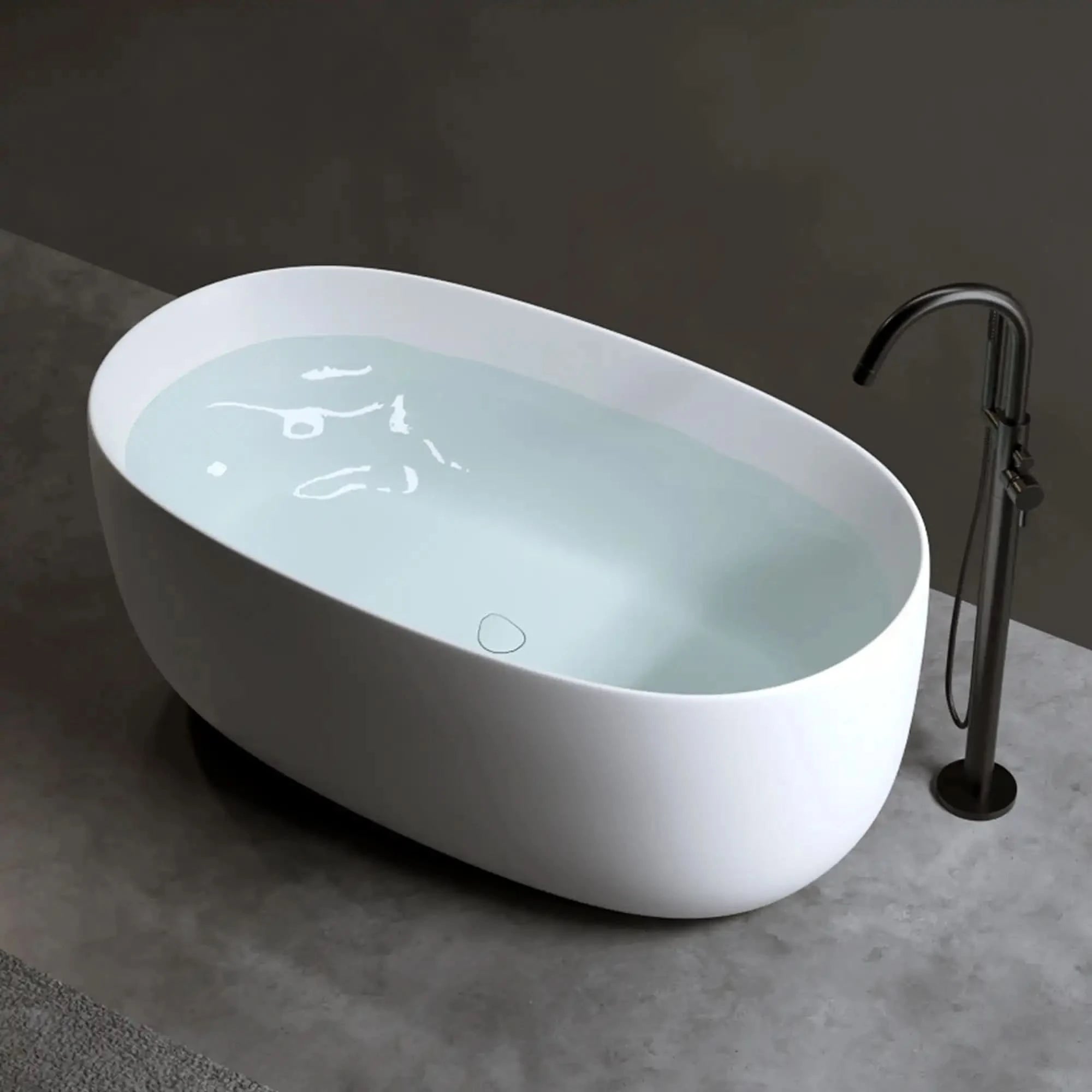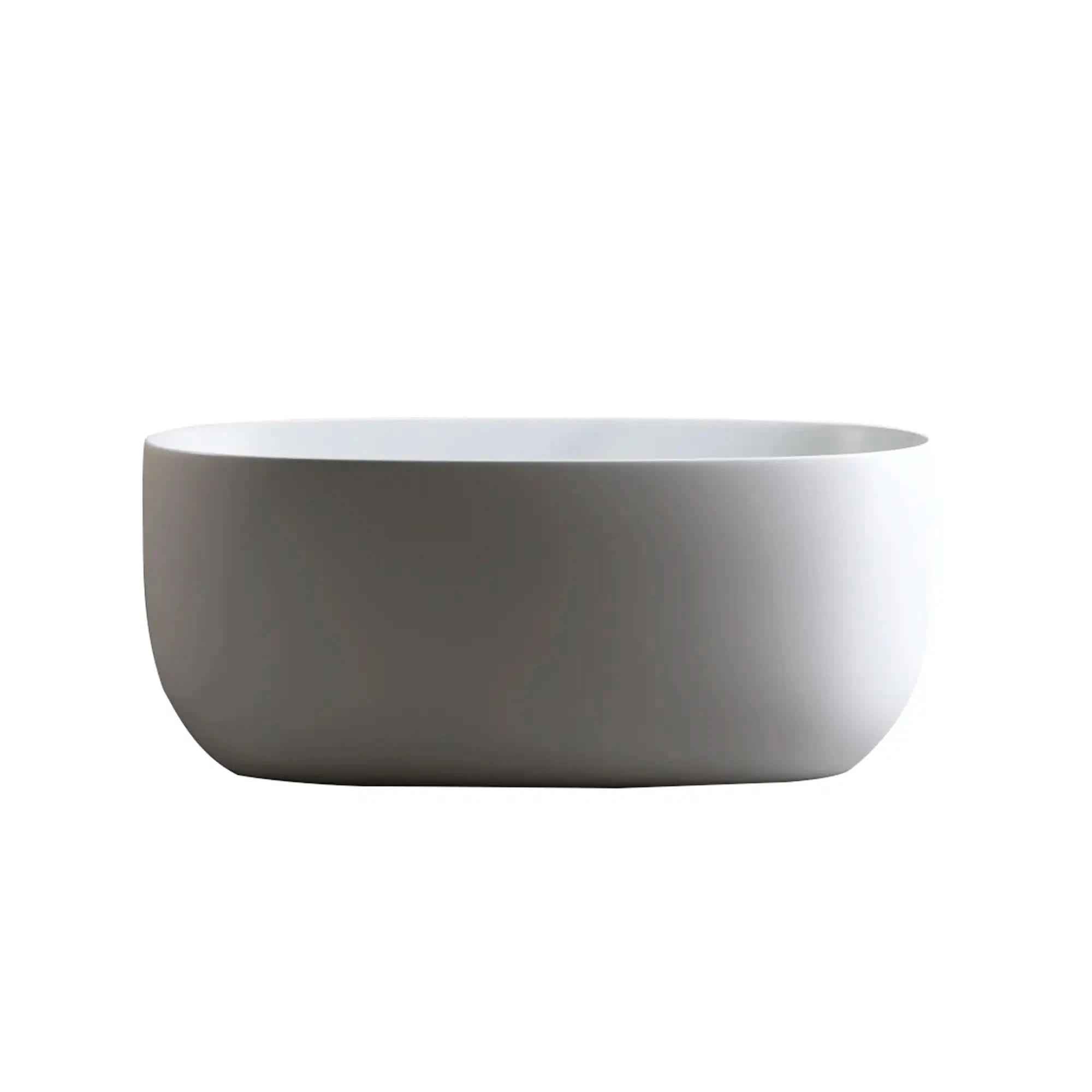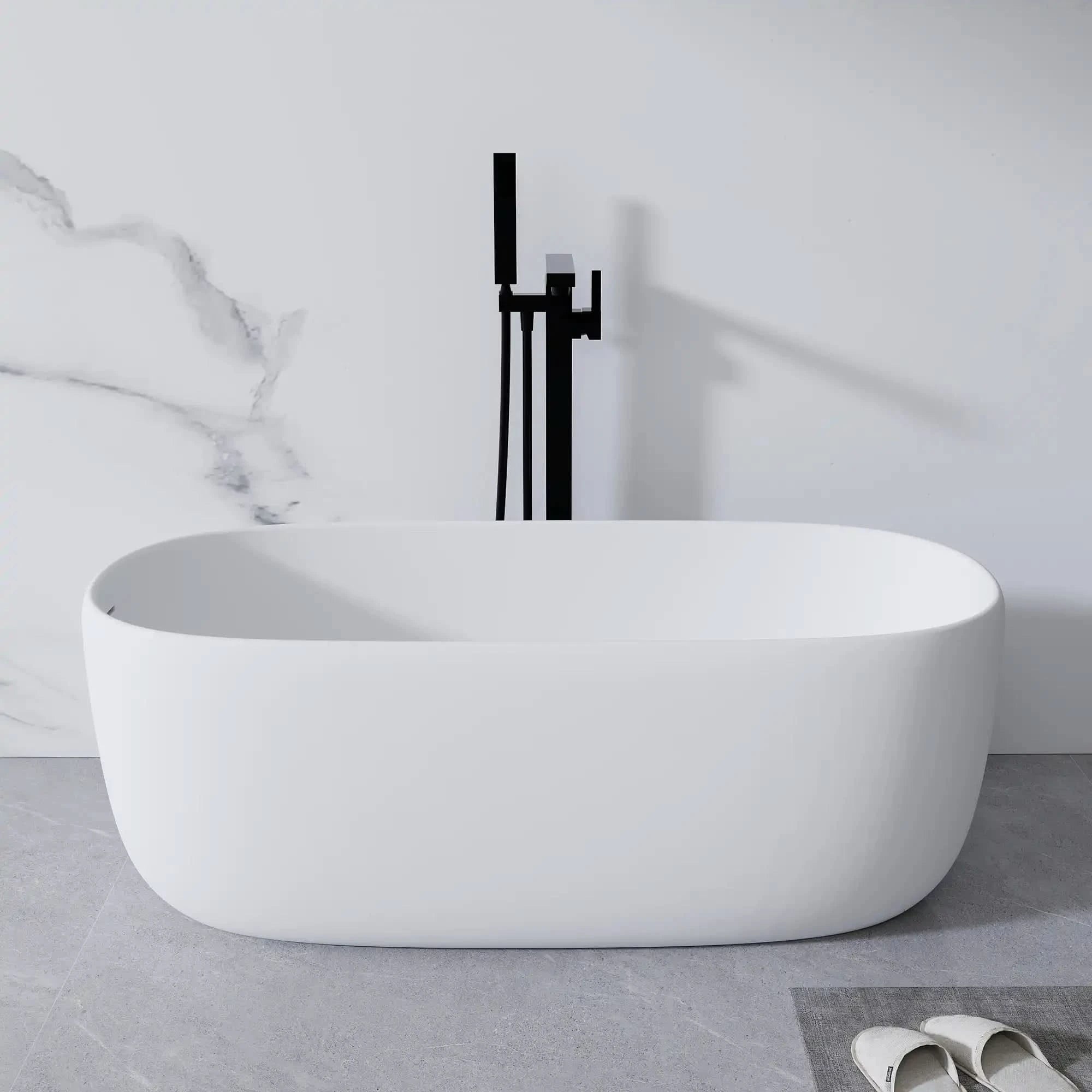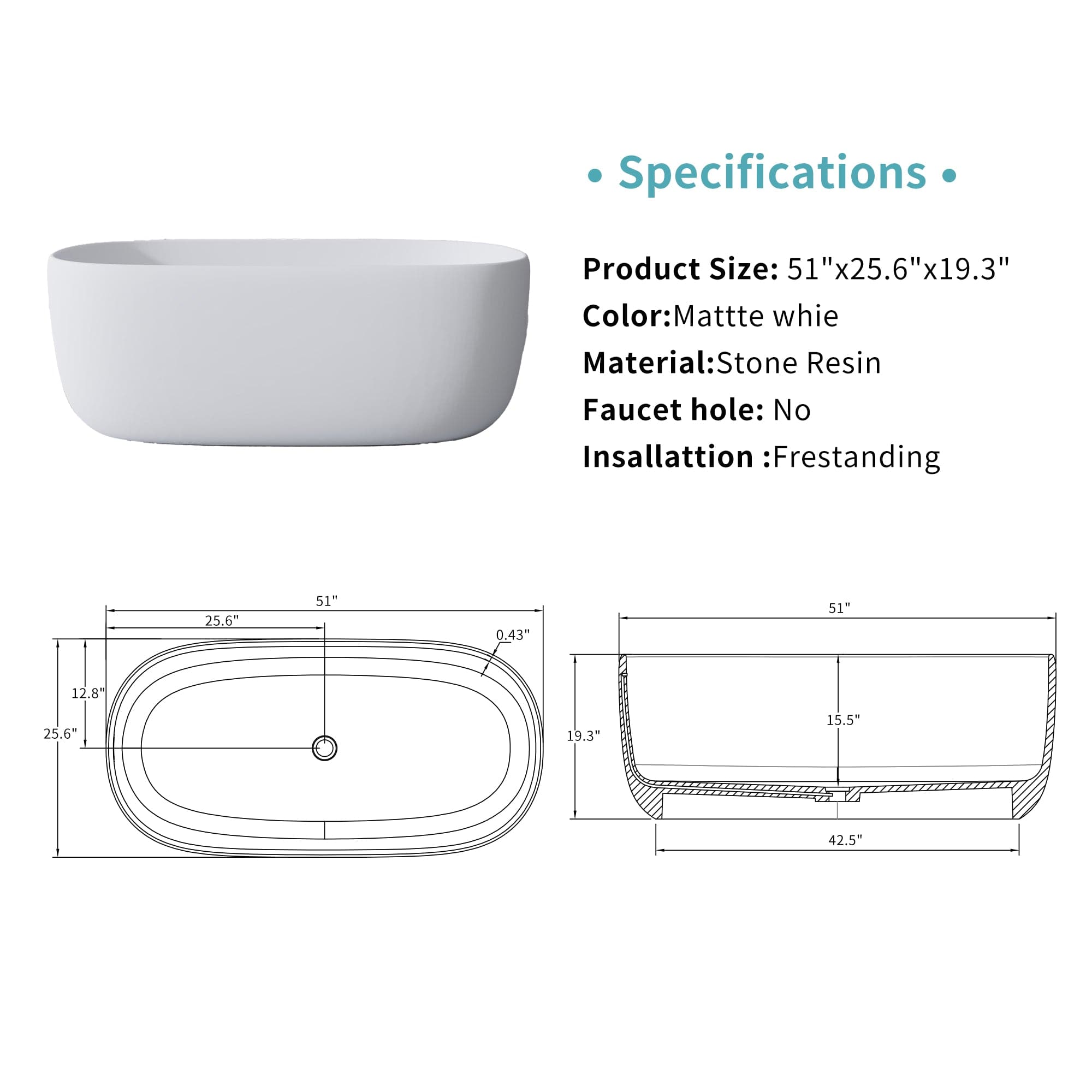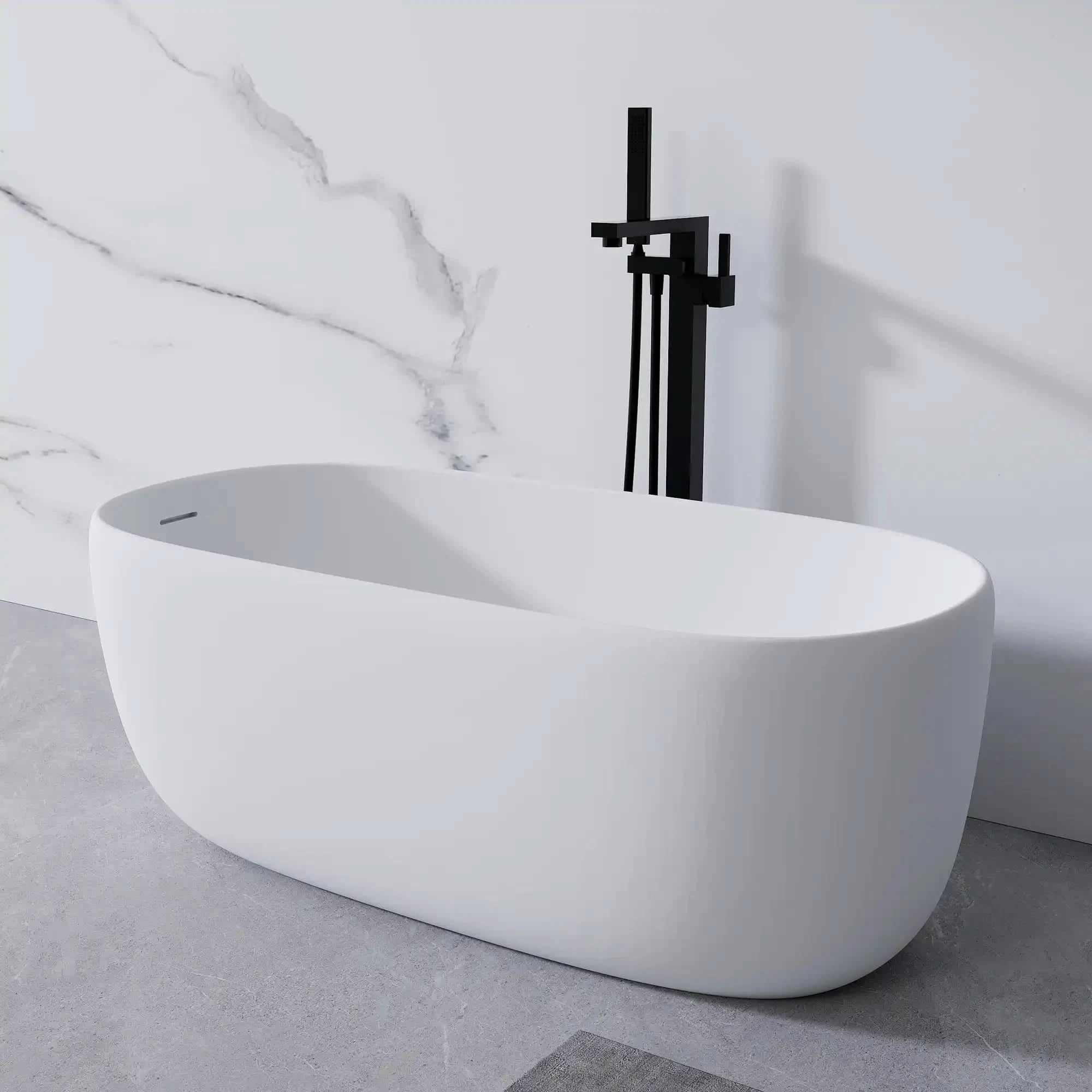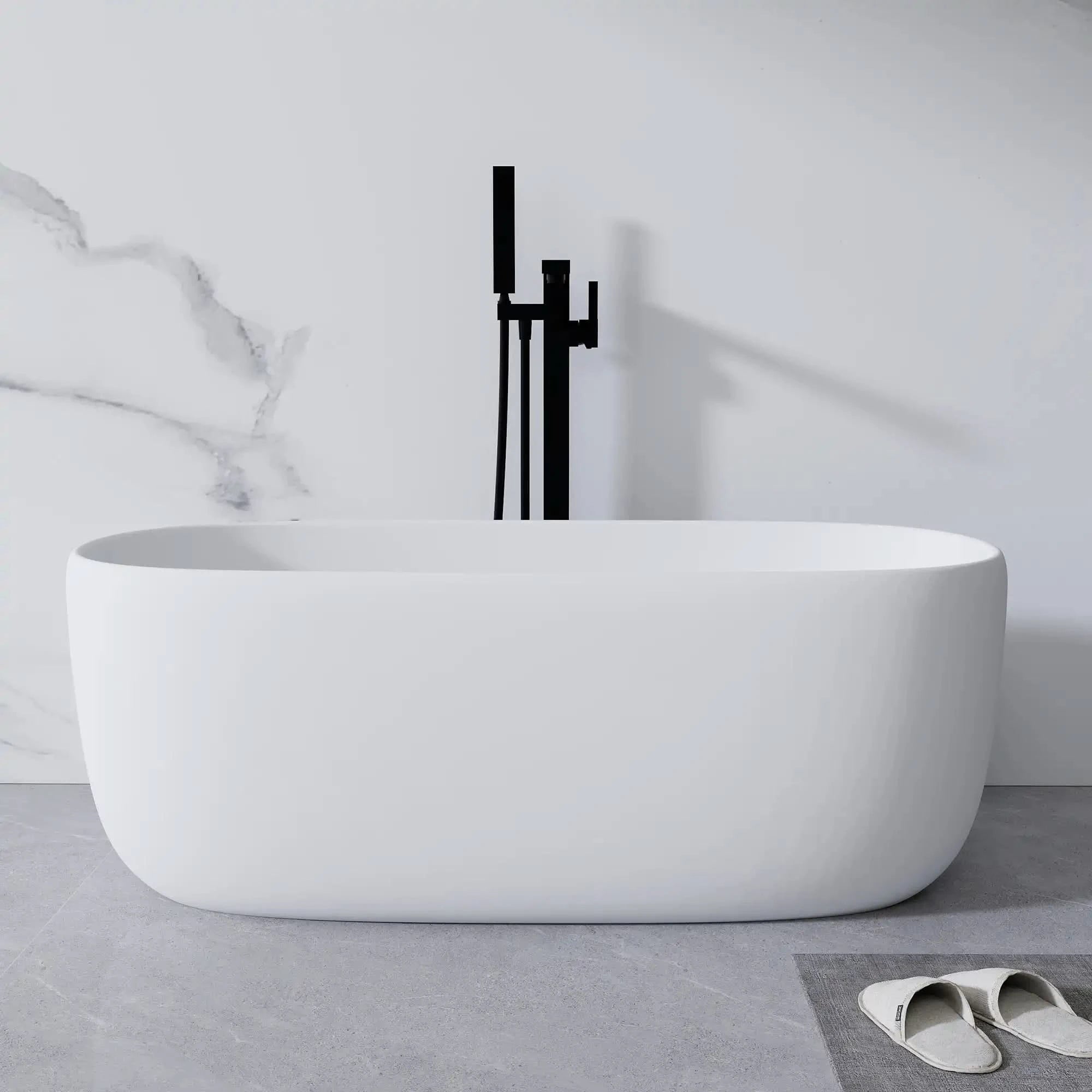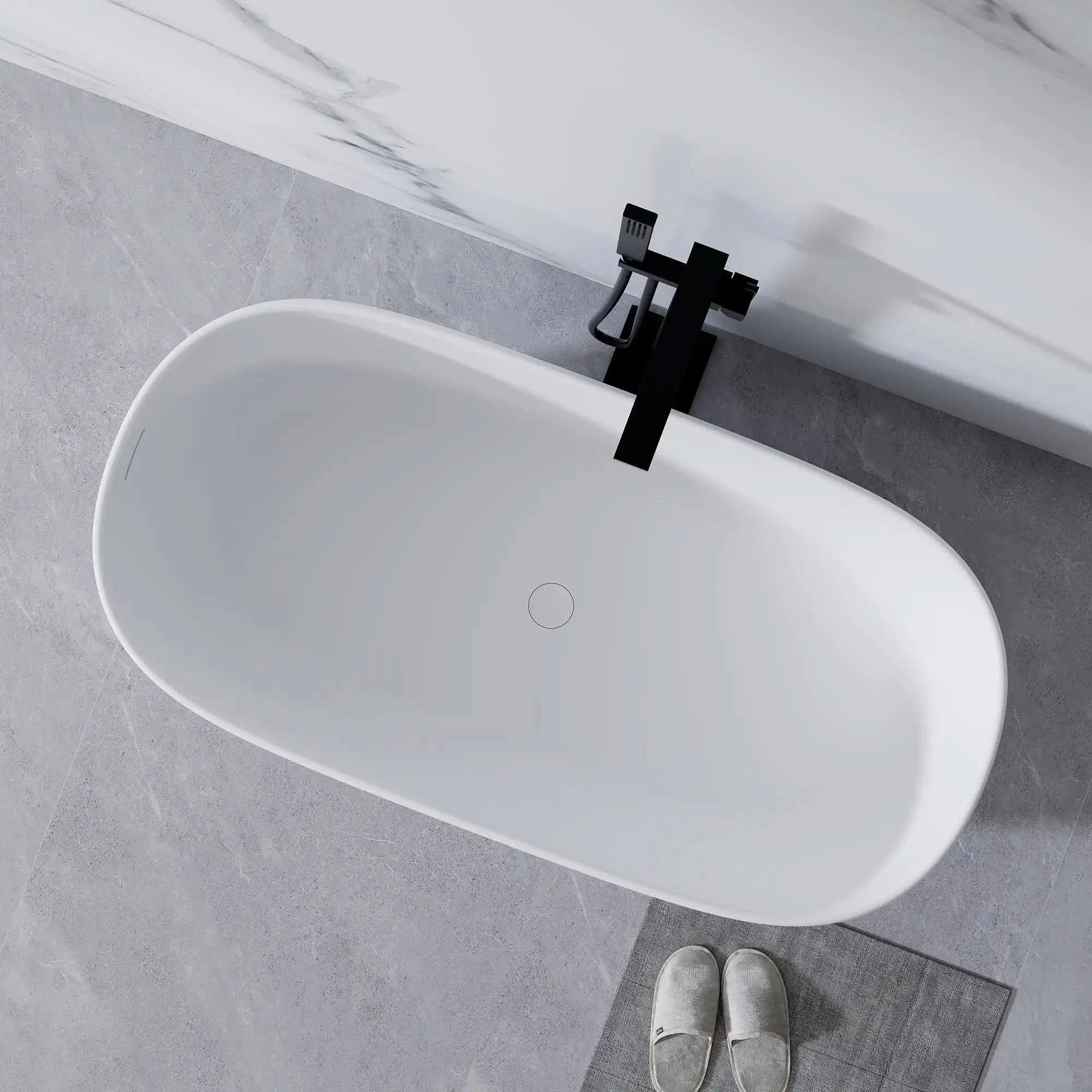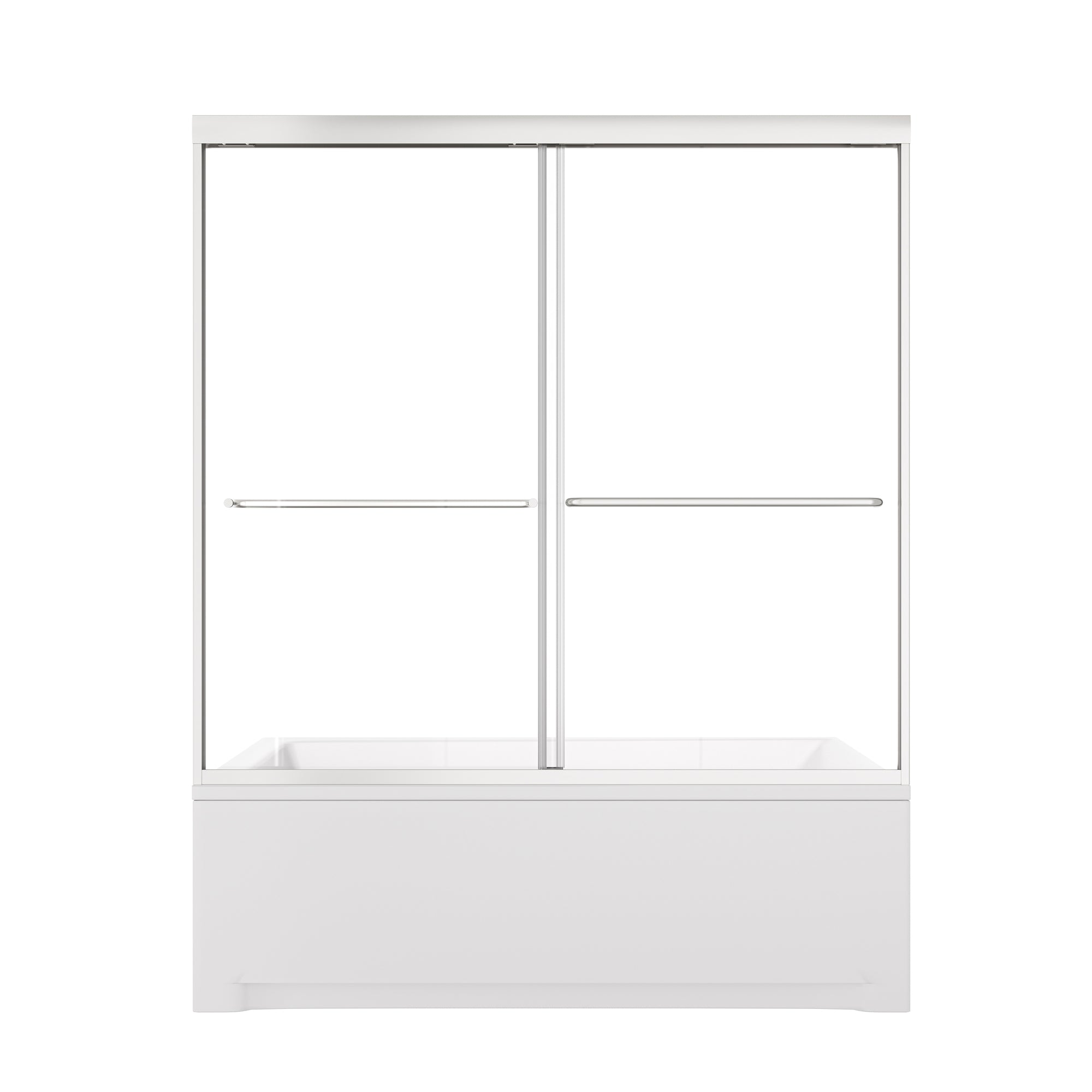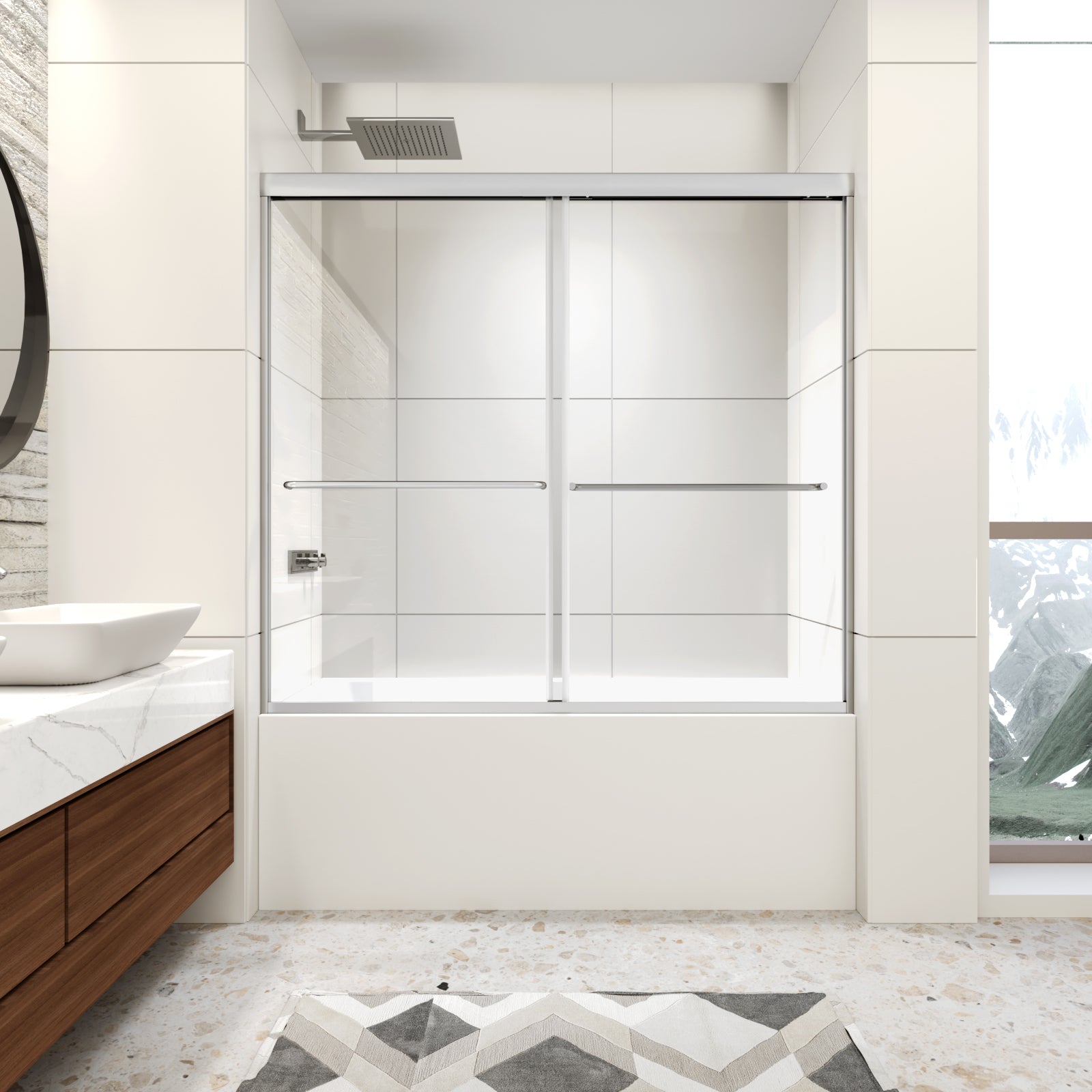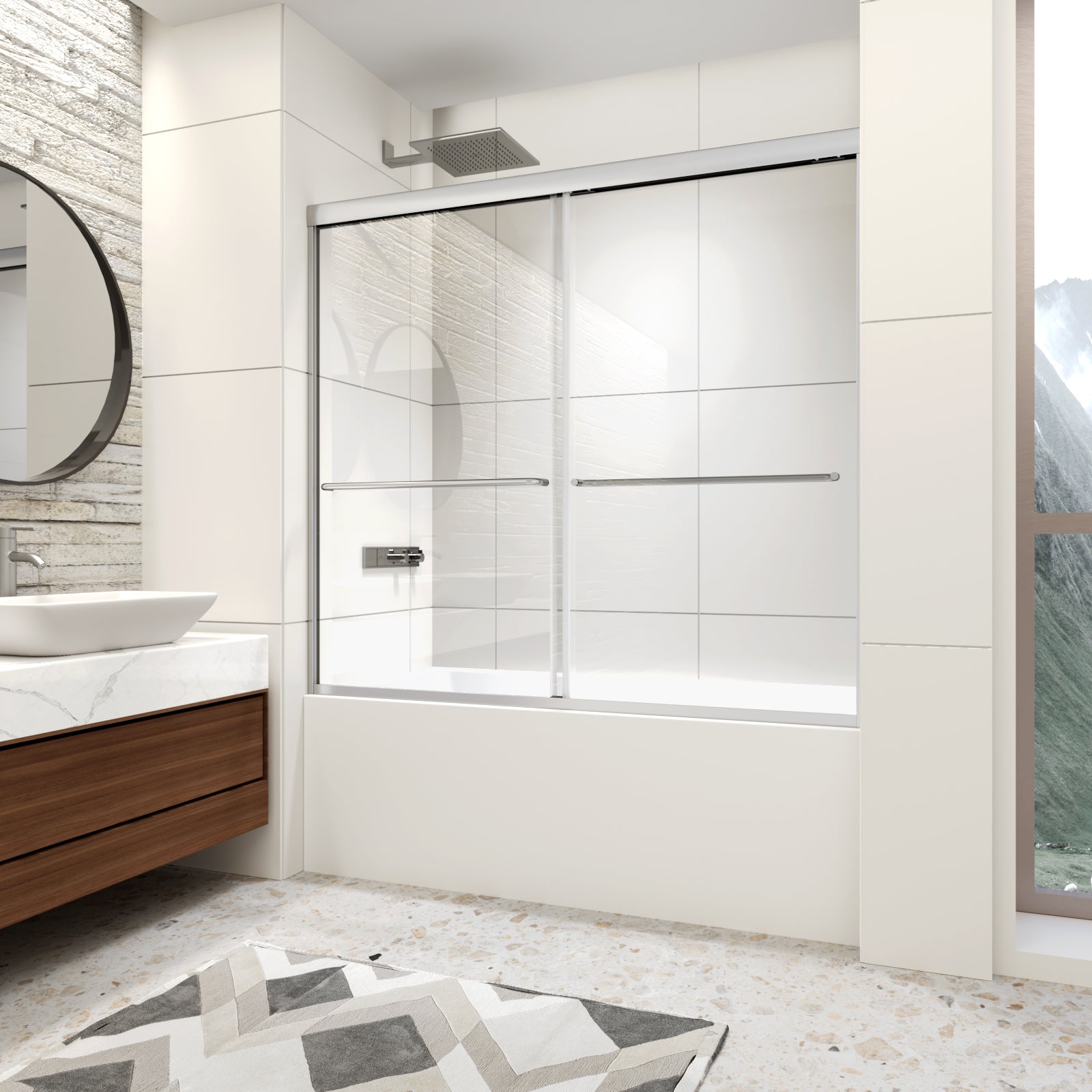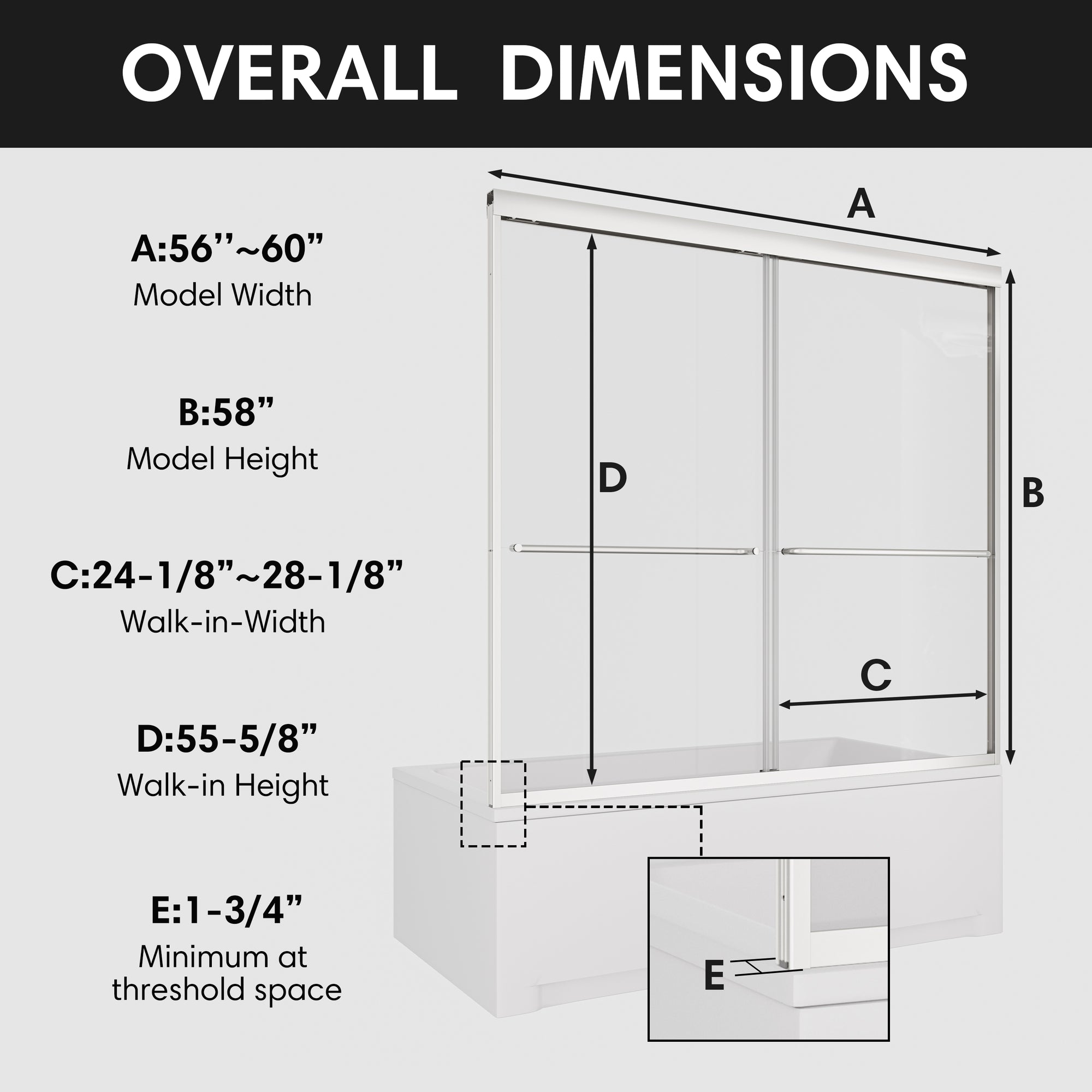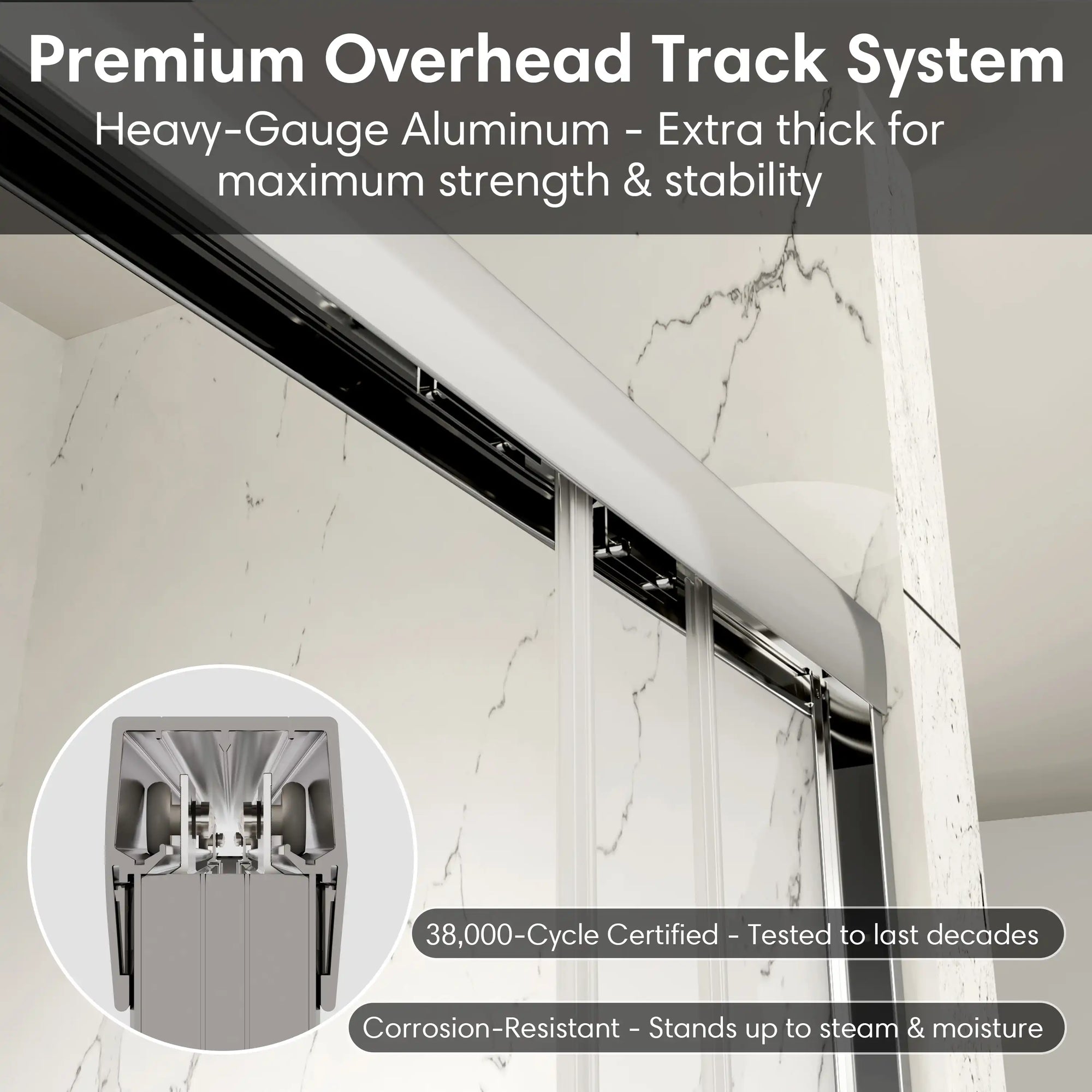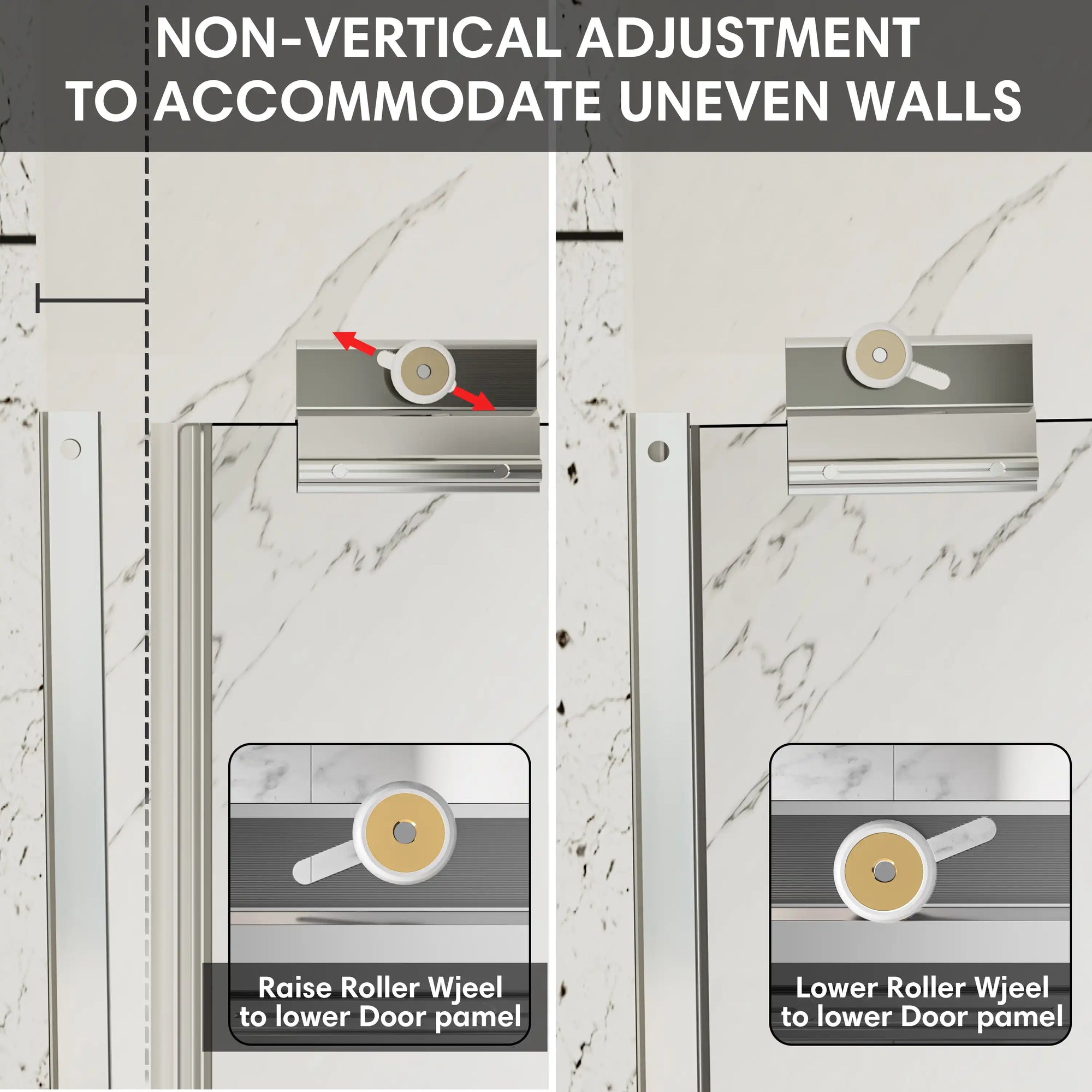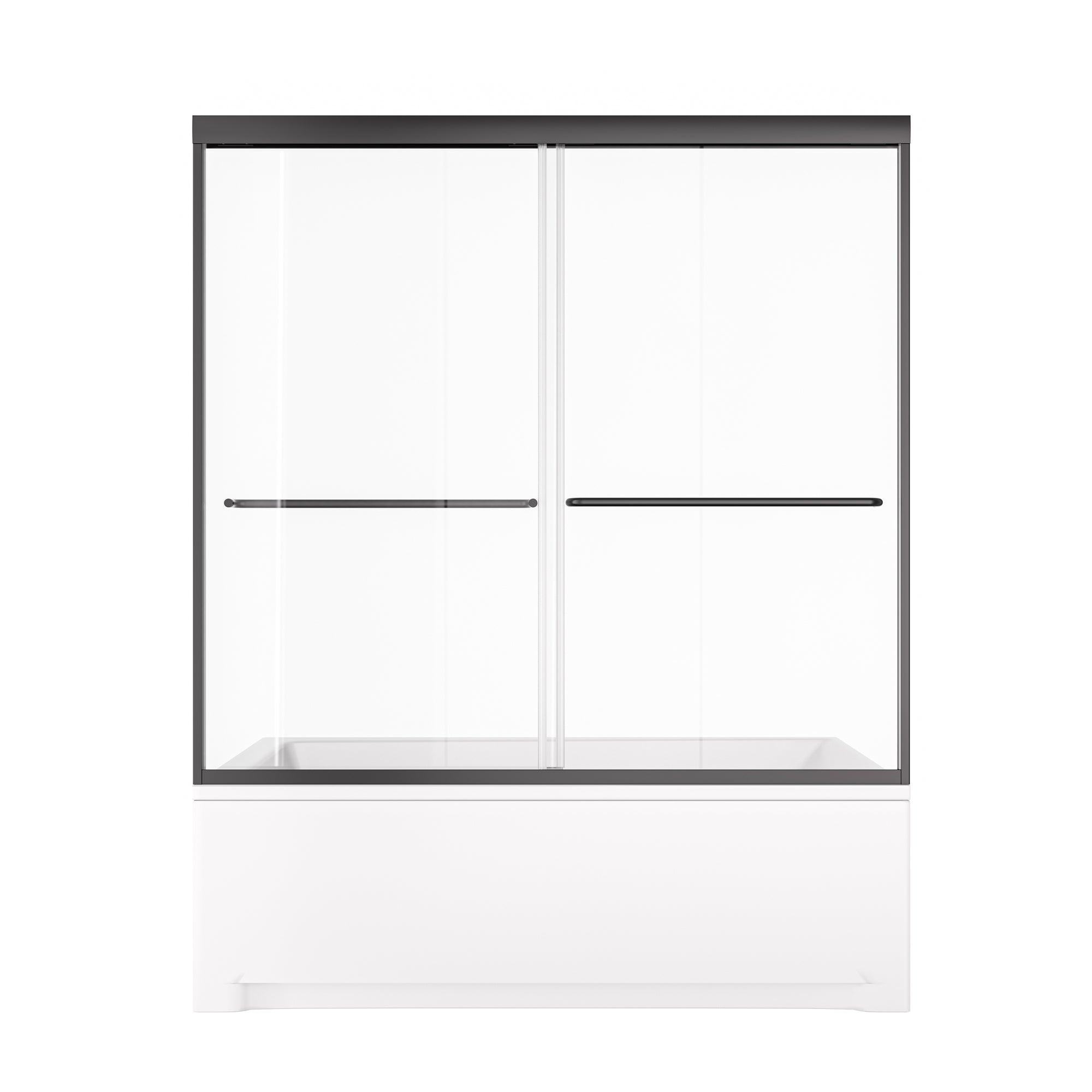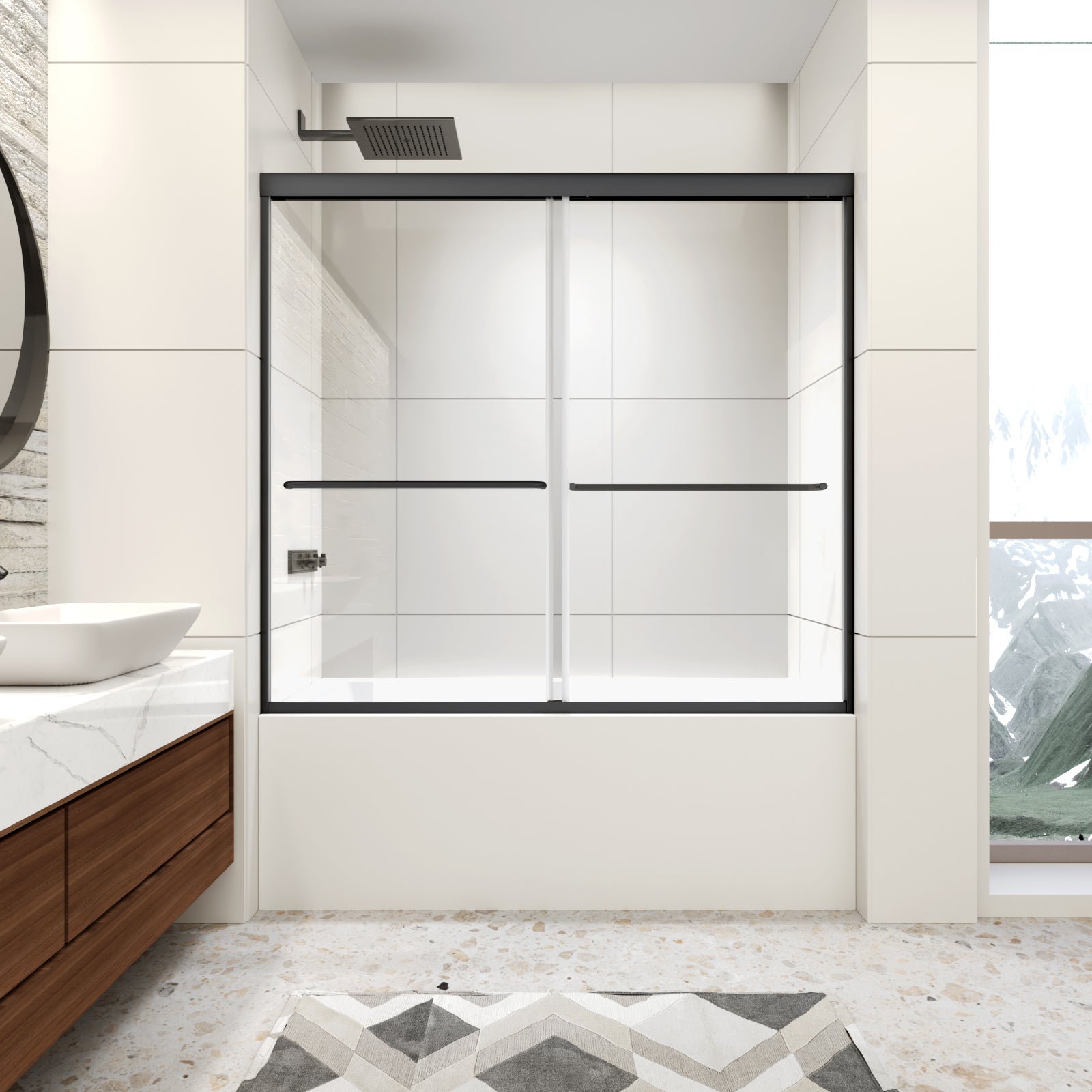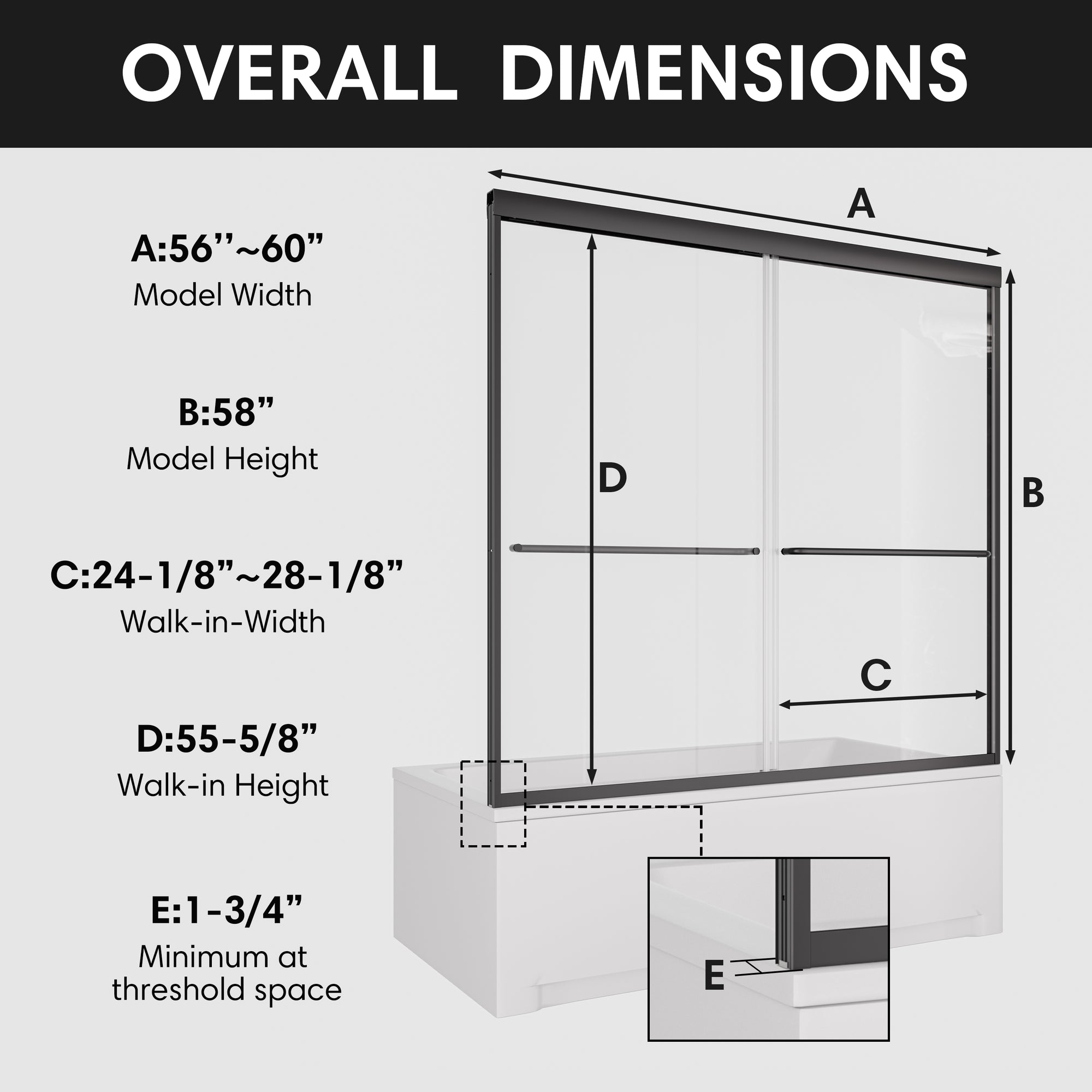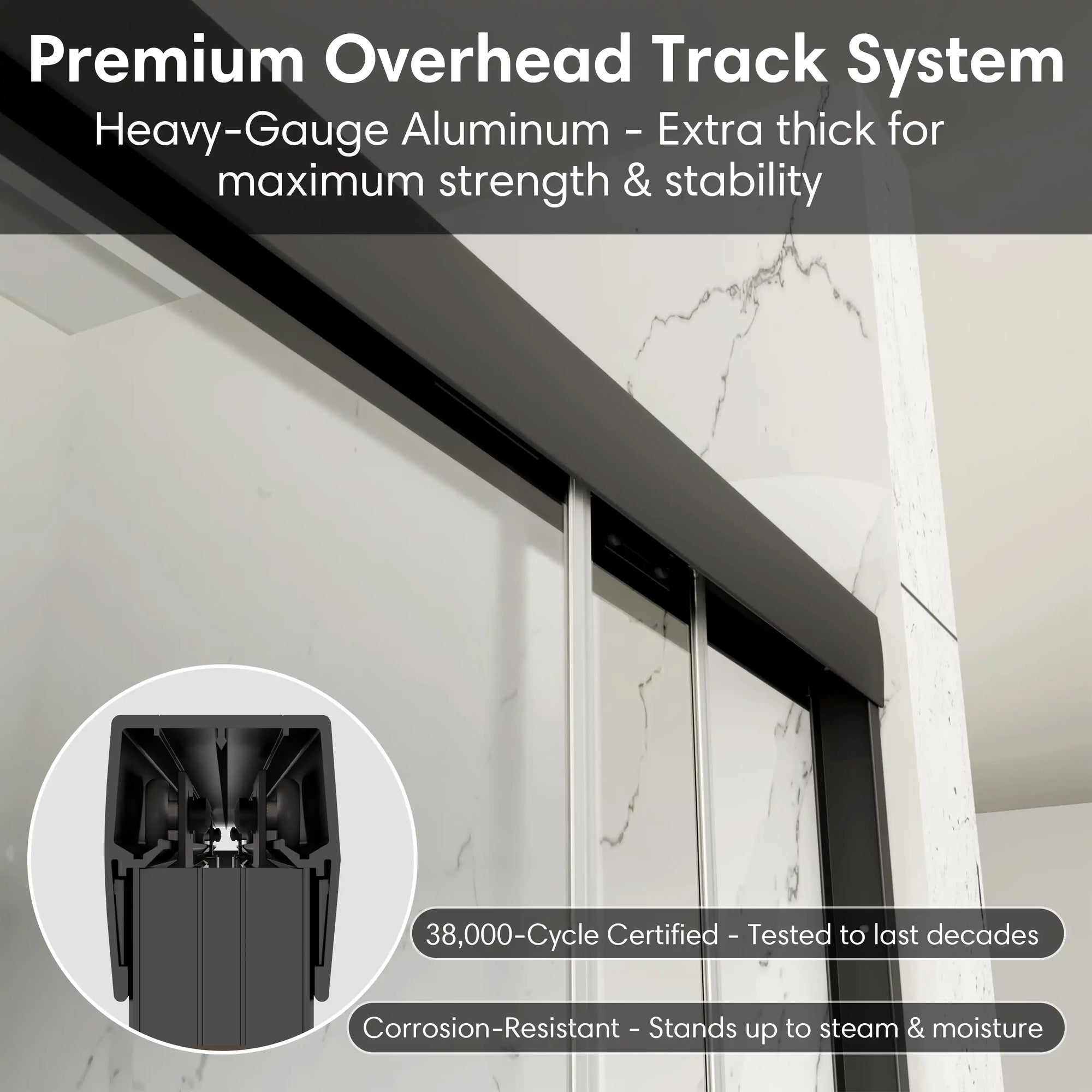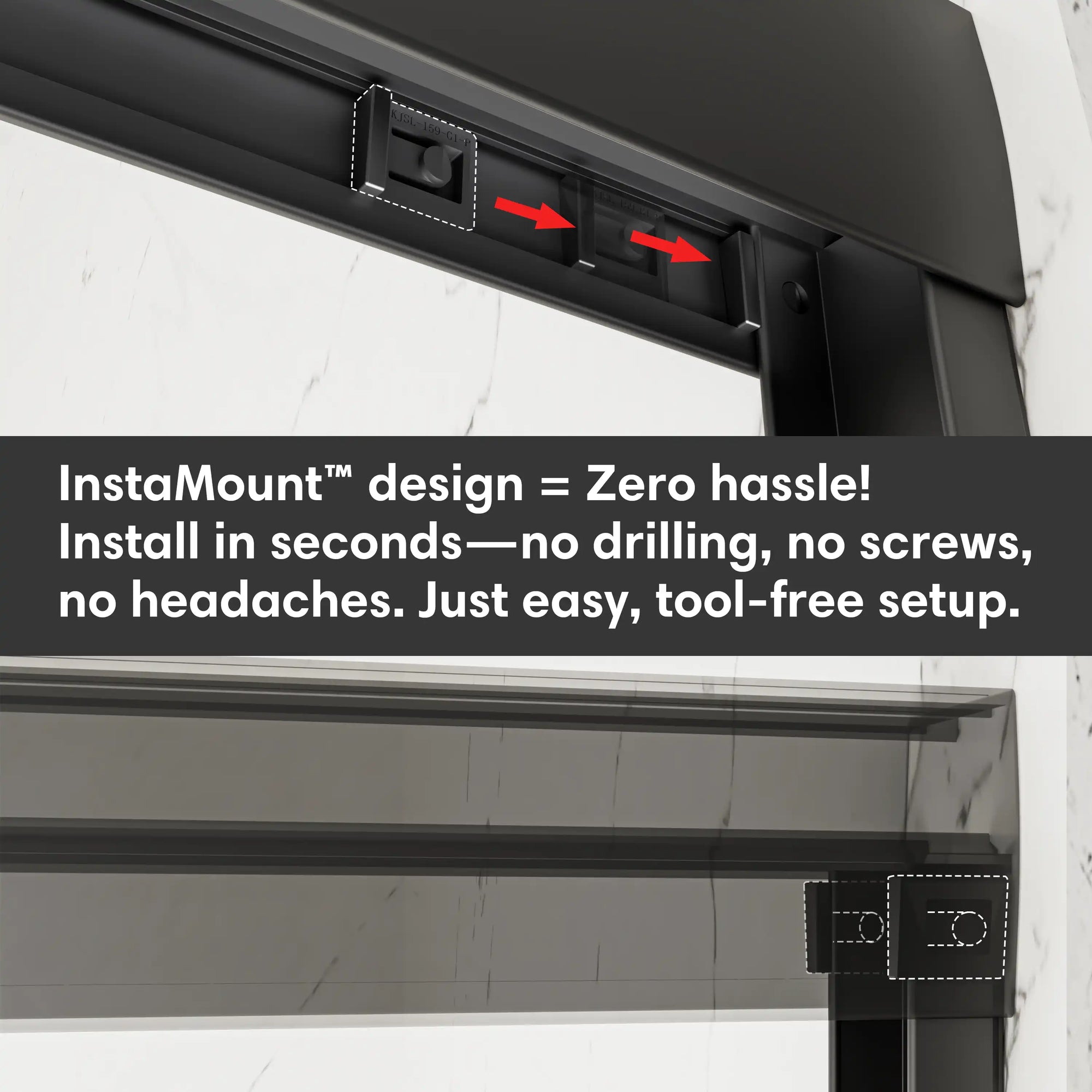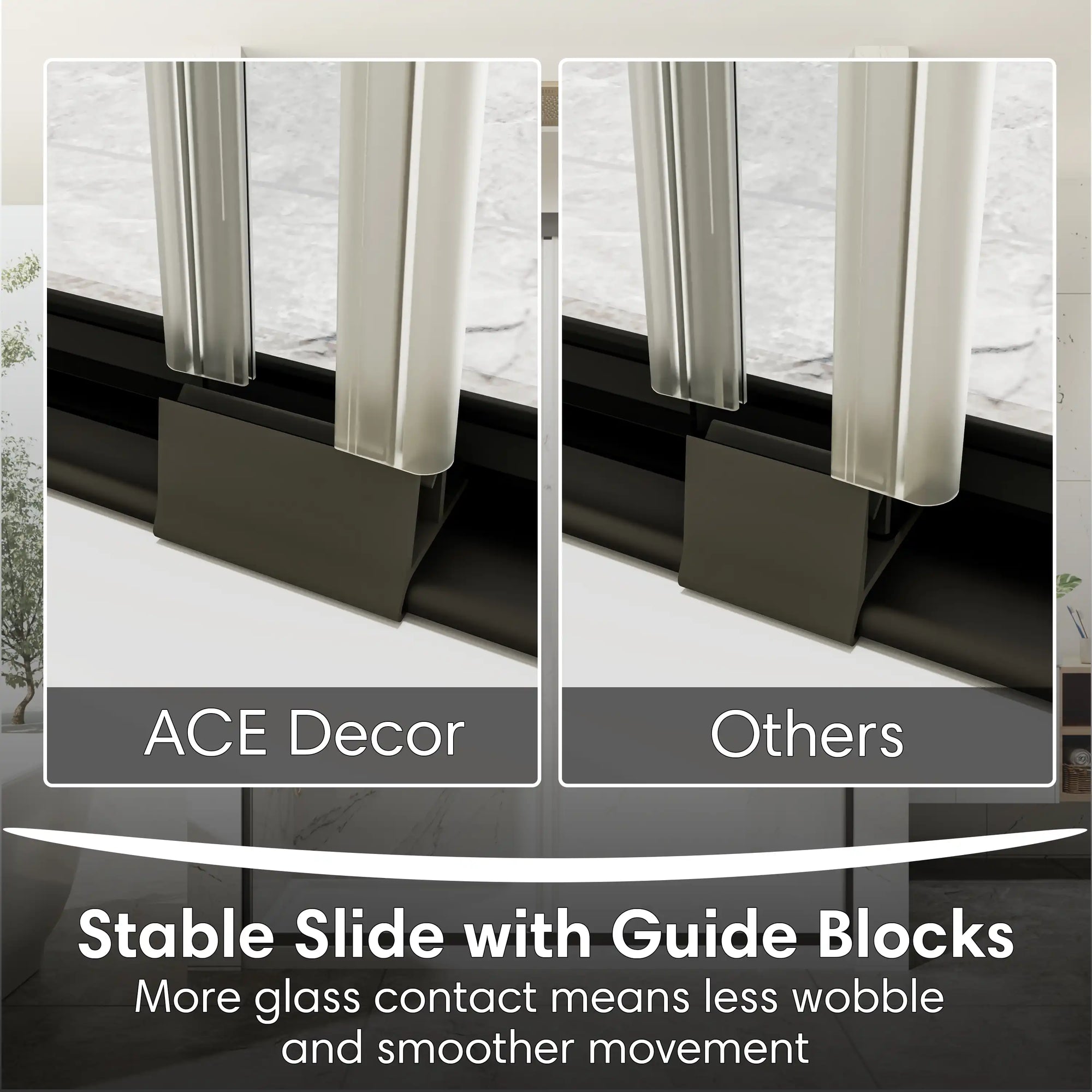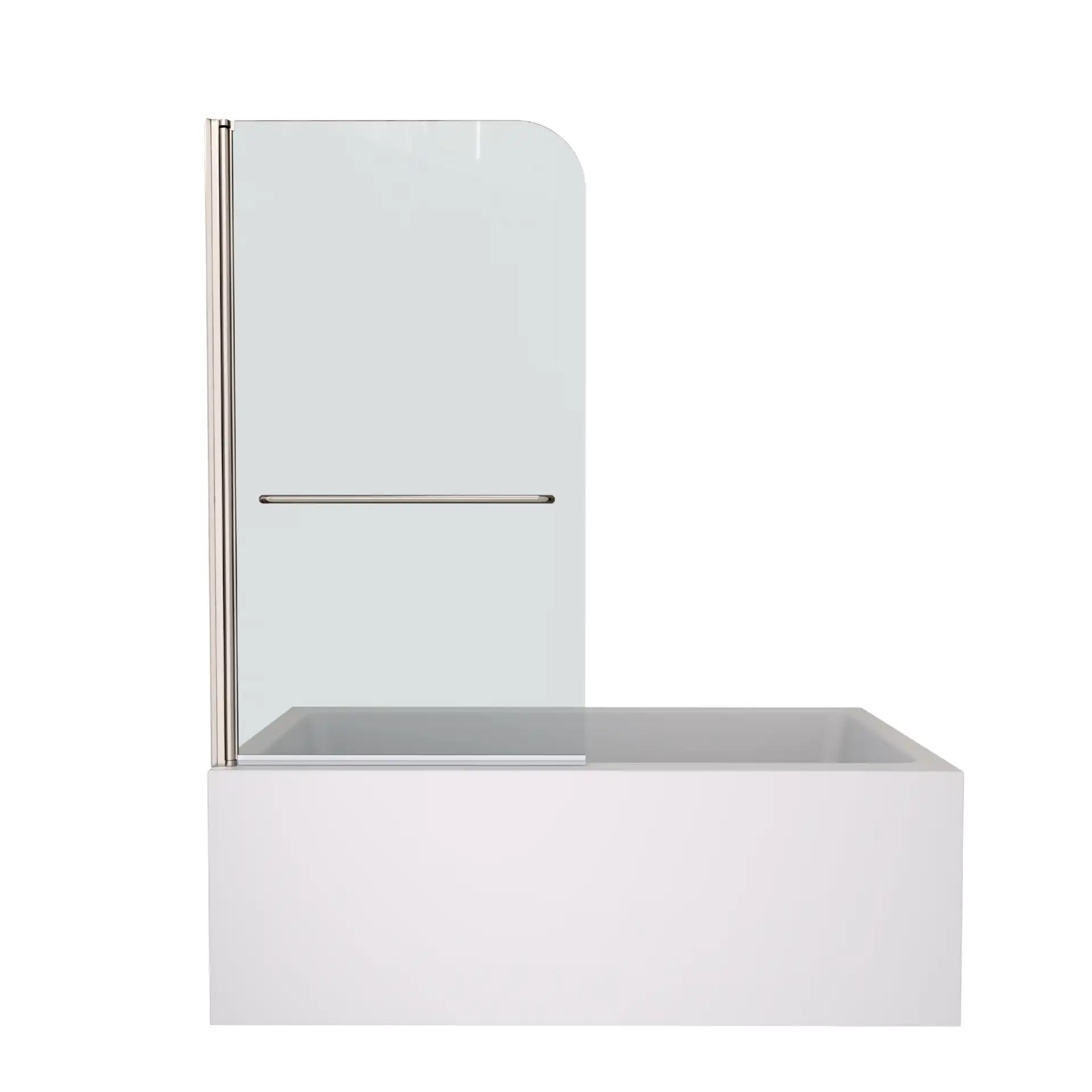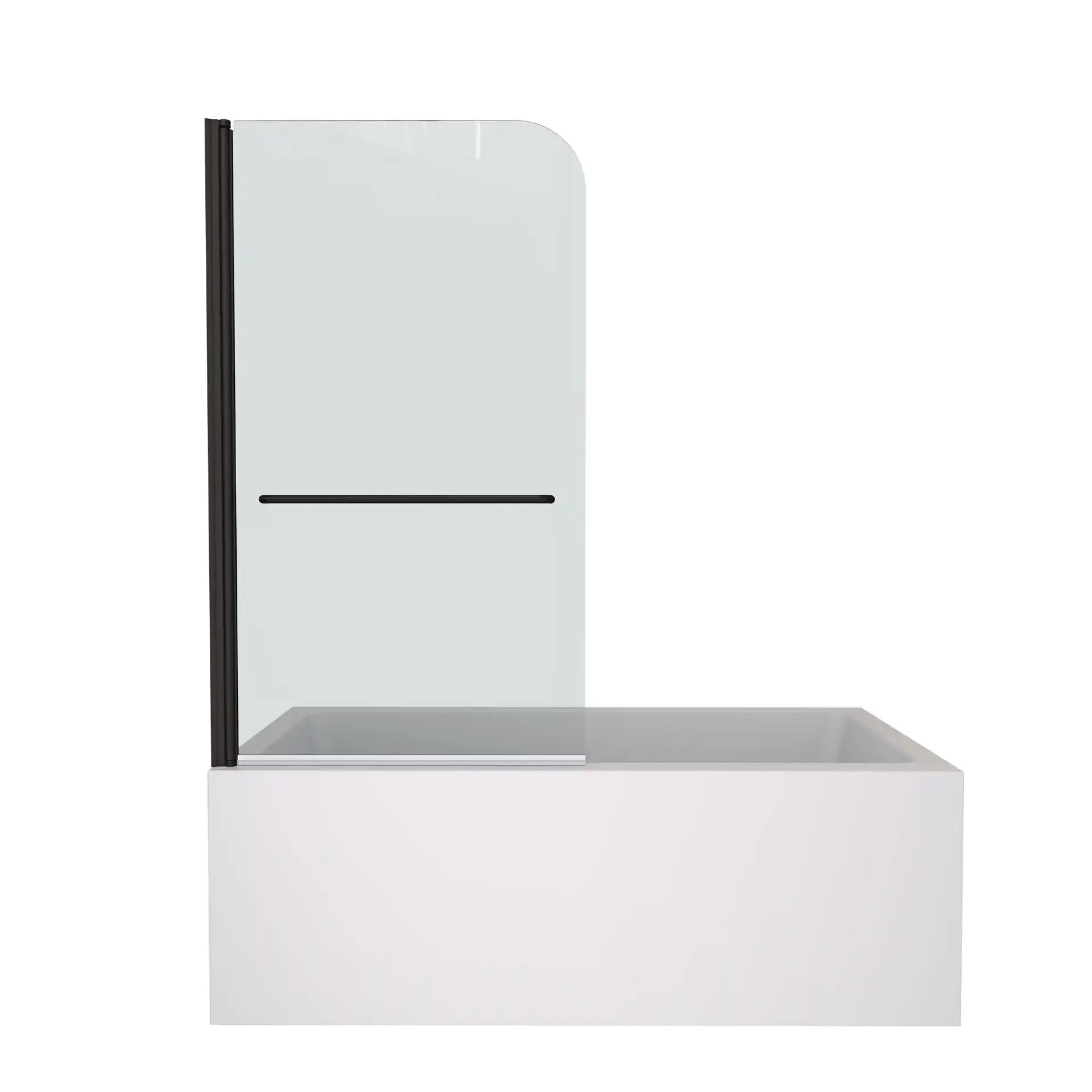Table of Contents:
- 1. Choosing the Right Material: A Bathroom Style Guide
- 2. Space-Saving & Statement-Making: Smart Layouts for Any Bathroom
- 3. Relax in Style: High-Tech Soakers Come To The Rescue
- 4. Find Your Flow: Aligning Your Tub With Your Design Theme
- 5. Eco-Chic Choices: Sustainable Bathtubs That Don’t Skimp on Luxury
- Conclusion
- FAQ
Choosing the Right Material: A Bathroom Style Guide
- Acrylic’s Versatility in Luxury in Motion
Lightweight but surprisingly sturdy, acrylic freestanding bathtubs are great for contemporary designs. Their smooth, non-porous surface is naturally resistant to stains and holds heat extremely well, so you can have a warm soak even with that bathwater-cool read you’ve left waiting. Offered in curves, ovals and angular silhouettes, acrylic can adjust to almost any room — be it one that evokes a spa-like minimalism or one that serves as the backdrop for a statement-making, modern-day gallery. Better to go with double-walled acrylic for more insulation (pro tip)
- The Stone Resin Warmth: Nature’s Sophistication
Stone resin tubs is a revelation for those who desire organic texture but don’t want to maintain natural stone. Made from crushed minerals and high-density resin, they mimic the earthy charm of granite or marble but offer better scratch resistance. Their weight alone adds stability (no wobbling halfway through a soak), and the material’s natural warmth means you don’t get any freak-outs stepping in, just unbroken serenity.
- Industrial-Chic: Metal Tubs for Dramatic Flair
Copper, curvy and sleek; moody blackened steel; or modern brushed nickel — metal freestanding bathtubs are for design maximalists. Less common than an acrylic or stone resin, they can nonetheless be arresting focal points, particularly in loft-style bathrooms or moody, monochromatic schemes. Metal transfers heat quickly (good for speedy warm-ups, but you have to pay attention to water temperature). Copper develops a rich patina over time, lending vintage character.
- The Issue of Weight: Practical Considerations

- Corner placement:
Oval or rounded tubs tend to work beautifully in corners a crouching tub maximizes space while still being elegant
- Near a Window:
If there’s no concern about privacy, position the tub below a window so that it becomes a spa-like retreat with natural light.
- Central Focal Point In larger bathrooms:
placing the tub at the center of the room creates a dramatic centerpiece.
- Slim & Compact Designs:
Freestanding tubs are not just bulky. Compact models (Japanese soaking tubs, for example) deliver deep relaxation without hogging floor space.

- AirJet Massage Systems:
Small air bubbles deliver a soft, bubbly massage, without the crushing force of the old-fashioned whirlpools.
- Chromatic Lighting:
LED-lit tubs bring color therapy to the water—blue for calm, red for invigorating.
- Built-In Heating:
High-end models will maintain the warmth of the water for prolonged medication, so you won’t freeze in the midst of your bath.
- Smart Controls:
Voice-activated or app-controlled filling allows you to get a head start on your bath, so you can pre-fill a soak for stress relief even before getting home.

4.
A freestanding bathtub is the hero of your bathroom—its form, finish, and presence should complement your space like a beautifully curated piece of art. Forget forced coordination; this is organic harmony. Here’s how to center your tub on your design vision and not your personality.
- Minimalism the Modern Way: Crisp Lines with Ease of Style
Choose an oval or rectangular acrylic freestanding bathtub with unbroken curves and a matte finish for a streamlined, minimalist look. A neutral palette — soft taupe, warm white or deep charcoal — keeps the look timeless, and a flared rim or gently sloped back adds ergonomic comfort. Team with floating vanities and frameless glass showers for seamless visual flow.
- Organic Modern: Textured Warmth Meets Contemporary Edge
For your space that mixes natural materials (like wood, linen, stone) with clean geometry, a stone resin freestanding bathtub is perfect. Its earthy texture and subtle tones sit between the raw and polished — consider terrazzo flecks for understated movement or a honed finish for unfussy luxe. Place it in front of a window or next to a living wall to help merge indoor and outdoor spaces.
- Industrial Loft: Brash Materials, No Apologizes Drama
Metal freestanding bathtubs (copper, oxidized steel) do well in the kind of spaces with exposed brick, concrete floors, and blackened fixtures. Their reflective faces catch the light, making for changing shadows. A molten centerpiece of a cylindrical copper tub; a ribbed steel design nods to warehouse chic.
- Scandi Splendor: Light, Airy, and Practical
A white or pale gray acrylic freestanding bathtub with slender proportions is demanded by the Nordic ethos — airy simplicity often paired with tactile warmth. Stay away from ornate detail and opt for gentler curves that resemble natural forms. Furnish with pale oak flooring, woven baskets and sheer linen curtains for hygge-ready cocooning.

5.
Today’s homebuyers are increasingly interested in sustainability — without compromising on design. Luckily, green, freestanding bathtubs are alive and well these days.
- Recycled Materials:
There are even brands that make tubs from upcycled metals or resins, creating less impact on the environment.
- Water-Smart Design:
Certain deep-soak tubs require less water than the standard models when shape and depth are optimized.
- Natural Finishes:
Stone resin and biodegradable sealants greatly reduce chemical use, while still providing durability.
- Longevity Over Trends:
Cast iron tubs don’t need to be swapped out every few years, so material choices should last decades, rather than contributing to landfill waste through replacement.
A tub that’s good for earth can still be a luxury experience — like a low-impact stone resin work or a reclaimed copper basin that speaks of its own history. Sustainability and luxury do not have to be at odds.

FAQ: Expert Answers to Your Freestanding Bathtub Questions
Q: Are freestanding bathtubs hard to install?
A: Installation varies by material and plumbing setup. While some may require additional floor reinforcement, many modern acrylic or stone resin models are surprisingly straightforward—just ensure professional help for the best results.
Q: Do freestanding tubs retain heat well?
A: Materials like cast iron and stone resin excel at heat retention, while acrylic may cool faster but often comes with built-in insulation options. Adding a tub cover can help extend warmth.
Q: Can I install a freestanding tub in a small bathroom?
A: Absolutely! Compact models (like oval or corner tubs) optimize space. Strategic positioning near a wall or alongside a shower keeps the layout functional without sacrificing style.
Q: How do I clean and maintain my freestanding tub?
A: Most require simple wiping with mild soap. Avoid harsh abrasives—especially on enameled or stone finishes. Regular upkeep keeps them looking pristine for years.
Q: Are high-tech bathtubs worth the extra cost?
A: If you value spa-like relaxation, features like AirJet massage or smart controls can transform your daily routine. However, if simplicity is your priority, classic designs work beautifully too.
